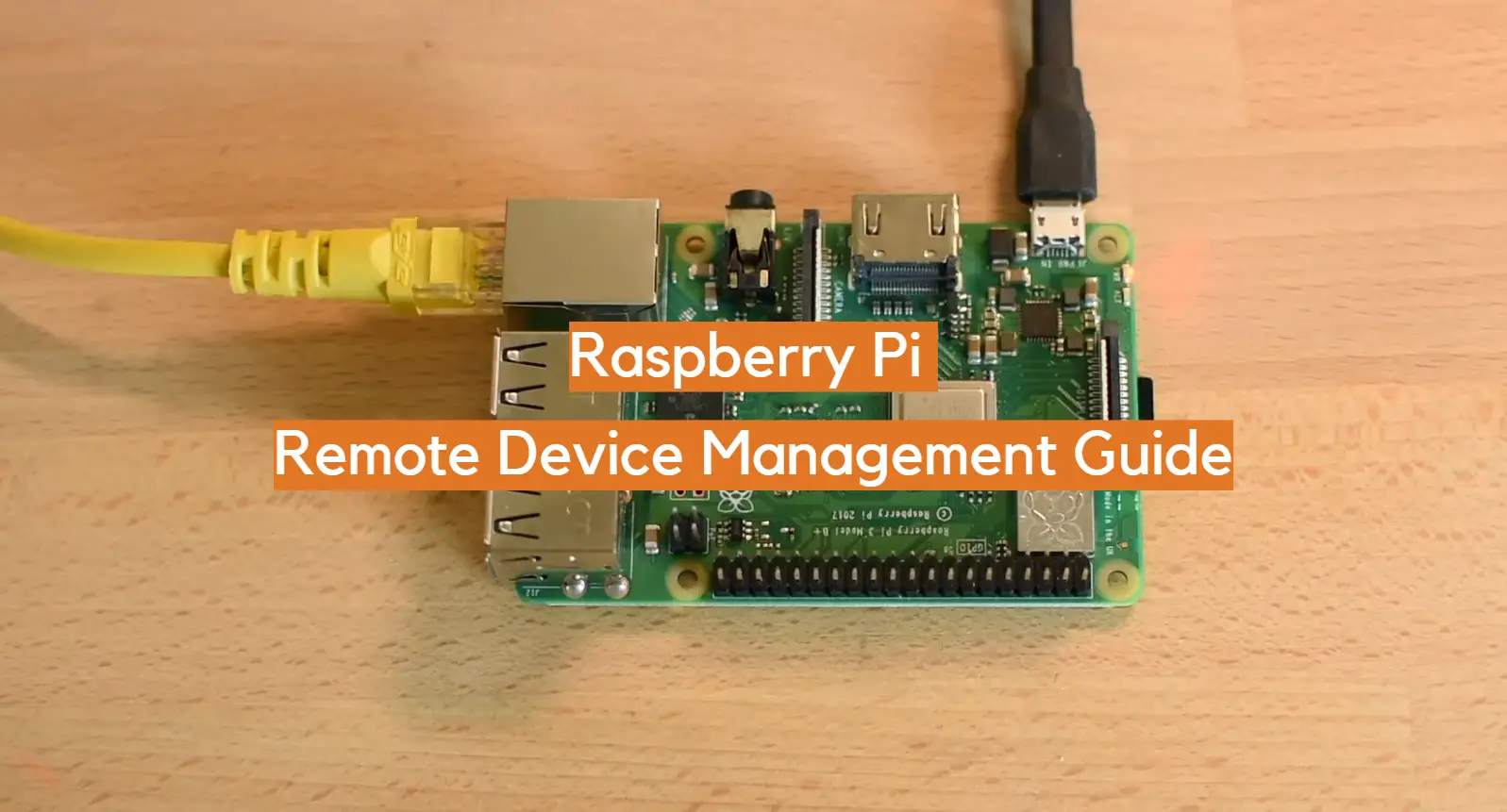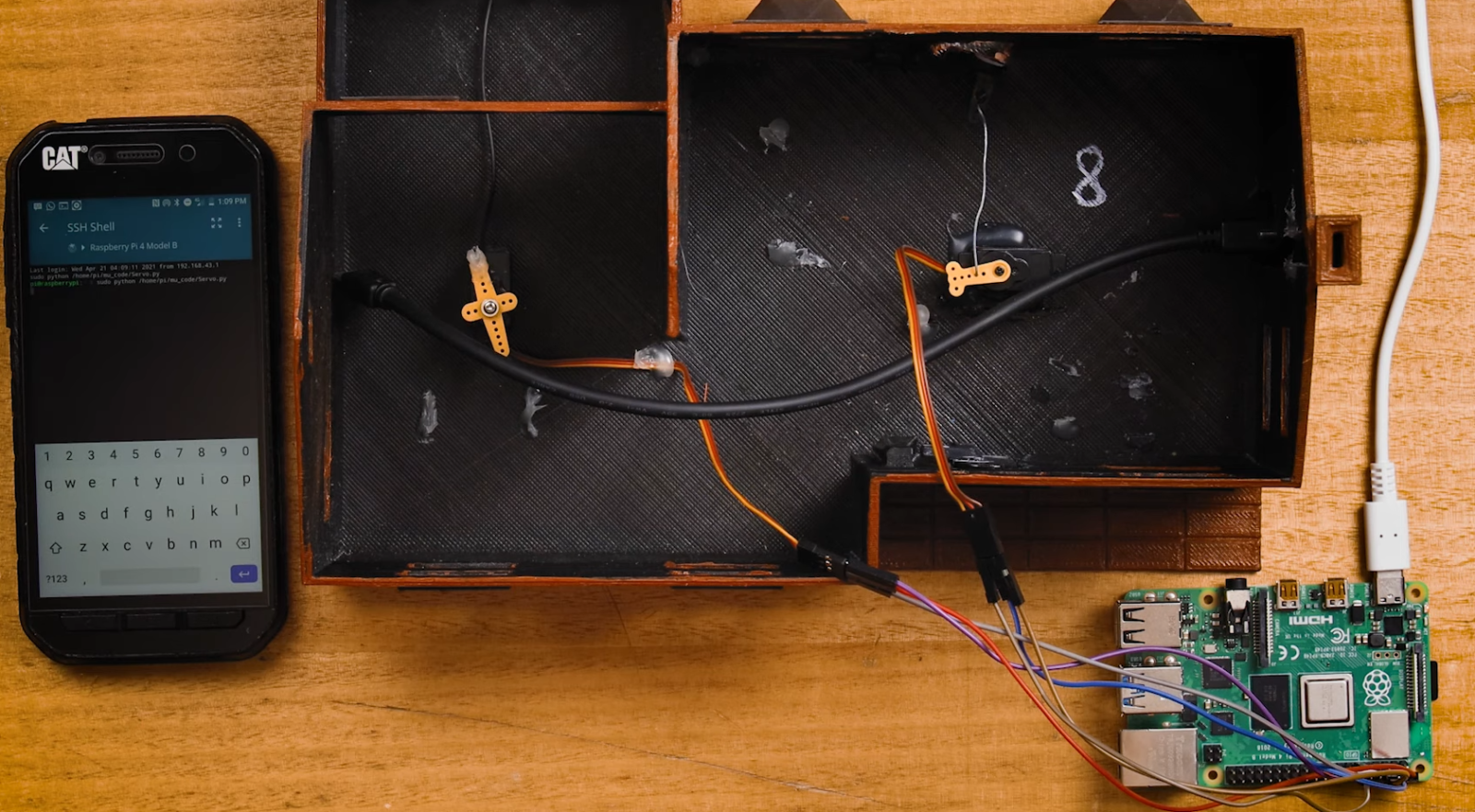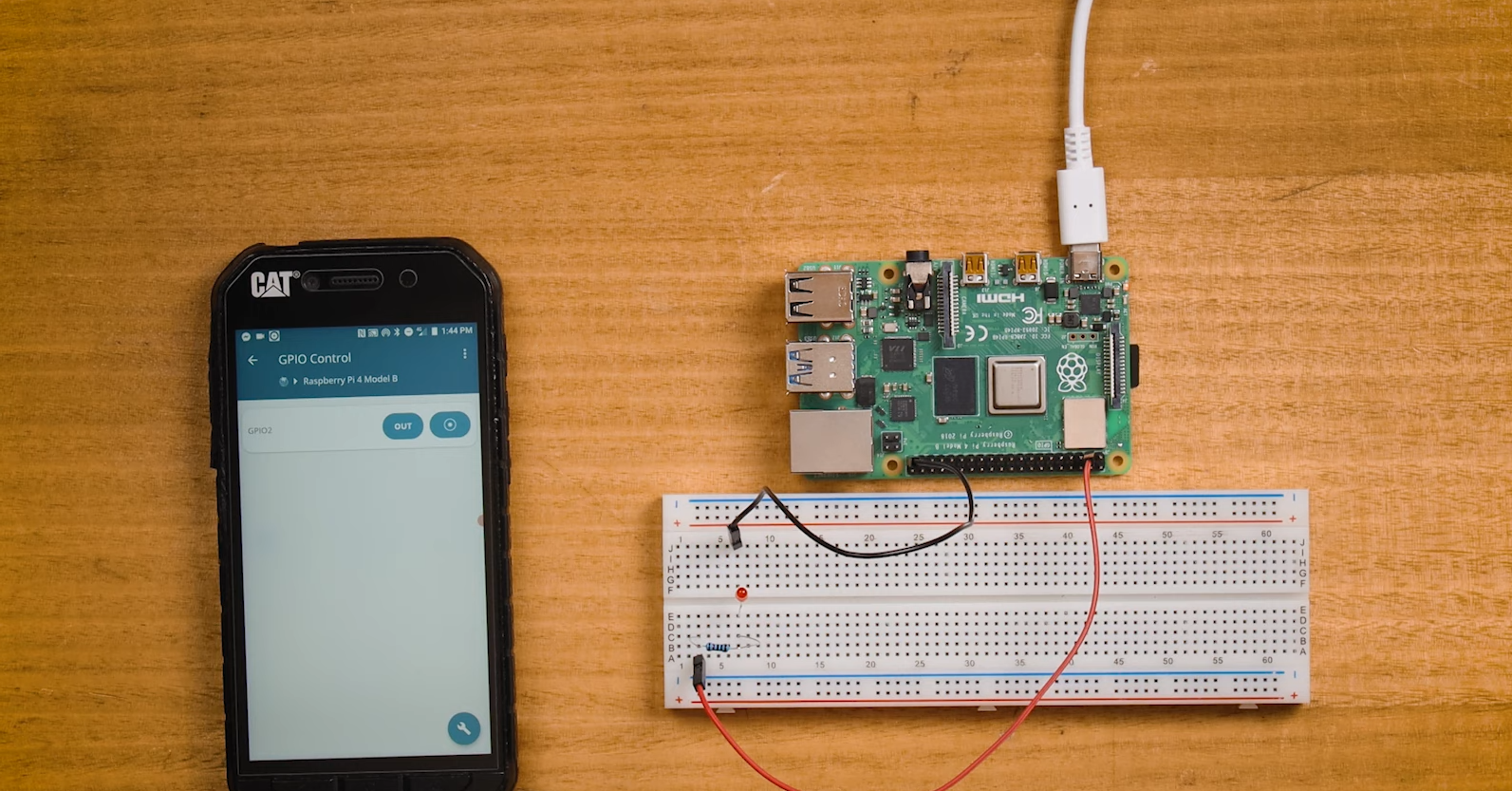Raspberry Pi Remote Device Management: A Comprehensive Guide For Tech Enthusiasts
Listen up, folks! If you've ever found yourself scratching your head wondering how to manage your Raspberry Pi devices from afar, you're in the right place. Raspberry Pi remote device management is a game-changer for tech enthusiasts, hobbyists, and even professionals who rely on these tiny but powerful computers. Whether you're tinkering with home automation, setting up IoT projects, or managing a fleet of Pis, remote management makes life so much easier. So, let's dive in and explore how you can take control of your Raspberry Pi setups without breaking a sweat.
Now, before we get too deep into the weeds, let me set the stage. Imagine this: you've got a Raspberry Pi running as a media center, a weather station, or even a smart home hub. But what happens when you need to troubleshoot, update software, or monitor its performance? Sure, you could physically connect to it every time, but who has time for that? That's where Raspberry Pi remote device management comes in. It's like having a remote control for all your projects, allowing you to manage them seamlessly from anywhere in the world.
By the end of this article, you'll have a solid understanding of how to set up and manage your Raspberry Pi devices remotely. We'll cover everything from essential tools and software to advanced techniques and best practices. So, grab a cup of coffee (or your favorite beverage), and let's get started on this journey together. Trust me, it's going to be worth it!
Read also:Lyracrow The Rising Star In The Music Scene You Need To Know About
Why Raspberry Pi Remote Device Management Matters
Alright, let's talk turkey here. Why should you care about Raspberry Pi remote device management? Well, for starters, it's all about convenience and efficiency. Imagine being able to monitor and control your Raspberry Pi projects from the comfort of your couch, your office, or even while you're on vacation. Sounds pretty sweet, right?
Here are a few reasons why remote management is a must-have for any Raspberry Pi enthusiast:
- Time-Saving: No more running back and forth to physically connect to your devices. Manage everything from one central location.
- Flexibility: Work on your projects whenever and wherever you want. Whether you're at home, on the road, or halfway around the world, your Raspberry Pi is just a click away.
- Scalability: As your projects grow, remote management makes it easier to handle multiple devices without losing control.
- Security: With the right tools and configurations, you can ensure your devices are secure and protected from unauthorized access.
So, if you're ready to level up your Raspberry Pi game, let's move on to the next section where we'll explore the tools and software you'll need to get started.
Essential Tools for Raspberry Pi Remote Device Management
When it comes to Raspberry Pi remote device management, having the right tools is crucial. Think of these tools as the Swiss Army knife of your tech arsenal. They'll help you accomplish everything from basic monitoring to advanced troubleshooting. Here's a rundown of some of the must-have tools:
SSH: The Workhorse of Remote Access
Secure Shell, or SSH, is the bread and butter of remote device management. It allows you to securely connect to your Raspberry Pi from another computer, enabling you to run commands, transfer files, and manage settings without needing physical access.
To set up SSH on your Raspberry Pi, follow these simple steps:
Read also:Bollyflixninjain Your Ultimate Destination For Bollywood Entertainment
- Enable SSH in the Raspberry Pi Configuration tool or via the command line.
- Make sure your Raspberry Pi is connected to the same network as your controlling device.
- Use an SSH client like PuTTY (Windows) or the built-in terminal (Mac/Linux) to connect to your Raspberry Pi.
VNC: For a More Visual Approach
While SSH is great for command-line tasks, sometimes you need a graphical interface. That's where VNC (Virtual Network Computing) comes in. VNC lets you remotely access the desktop environment of your Raspberry Pi, giving you full control over its graphical interface.
Setting up VNC is just as easy:
- Install the RealVNC server on your Raspberry Pi.
- Download and install the RealVNC client on your controlling device.
- Connect to your Raspberry Pi and start managing it like you're sitting right in front of it.
Setting Up Raspberry Pi for Remote Access
Now that you know the tools, let's talk about setting up your Raspberry Pi for remote access. This is where the magic happens, and it's surprisingly straightforward. Follow these steps to get your Raspberry Pi ready for remote management:
Step 1: Update Your Raspberry Pi
Before doing anything else, make sure your Raspberry Pi's operating system is up to date. This ensures you have the latest features and security patches.
sudo apt update && sudo apt upgrade
Step 2: Configure Network Settings
A stable network connection is key to successful remote management. Consider setting up a static IP address for your Raspberry Pi to avoid connection issues.
Step 3: Enable Remote Access Services
As we discussed earlier, enabling SSH and VNC is essential for remote management. Don't forget to secure these services with strong passwords or even two-factor authentication for added protection.
Advanced Techniques for Raspberry Pi Remote Device Management
Once you've got the basics down, it's time to take things to the next level. Here are some advanced techniques to enhance your Raspberry Pi remote device management capabilities:
Using Docker for Containerized Applications
Docker allows you to run applications in isolated containers, making it easier to manage and deploy them remotely. This is especially useful if you're working on multiple projects or need to run different environments on the same Raspberry Pi.
Monitoring and Logging
Set up monitoring tools like Grafana or Prometheus to keep an eye on your Raspberry Pi's performance. Combine this with logging solutions like rsyslog to track system events and troubleshoot issues more effectively.
Best Practices for Secure Remote Management
Security should always be a top priority when managing devices remotely. Here are some best practices to keep your Raspberry Pi safe:
- Use strong, unique passwords for SSH and VNC.
- Consider disabling password authentication and using SSH keys instead.
- Regularly update your Raspberry Pi's operating system and installed software.
- Enable firewalls and limit access to trusted IP addresses.
Real-World Applications of Raspberry Pi Remote Device Management
Let's take a look at some real-world examples of how Raspberry Pi remote device management is being used today:
Home Automation
Many homeowners use Raspberry Pi to control smart home devices, such as lighting, thermostats, and security systems. Remote management allows them to monitor and adjust settings from anywhere, ensuring comfort and security.
IoT Deployments
In industrial settings, Raspberry Pi is often used as part of IoT deployments. Remote management enables technicians to maintain and troubleshoot devices without needing to be on-site.
Troubleshooting Common Issues
Even with the best setup, issues can arise. Here are some common problems and how to solve them:
Connection Issues
If you're having trouble connecting to your Raspberry Pi remotely, check your network settings, ensure SSH or VNC is enabled, and verify that there are no firewall rules blocking access.
Performance Problems
Slow performance can be caused by insufficient resources or outdated software. Monitor your Raspberry Pi's CPU and memory usage and update your system regularly to keep things running smoothly.
Conclusion: Take Control of Your Raspberry Pi Projects
And there you have it, folks! Raspberry Pi remote device management isn't just a cool feature; it's a necessity for anyone serious about their Raspberry Pi projects. By leveraging the right tools, techniques, and best practices, you can take full control of your devices from anywhere in the world.
Now, it's your turn to put this knowledge into action. Whether you're setting up SSH, configuring VNC, or diving into advanced techniques, the possibilities are endless. And remember, if you have any questions or need further assistance, don't hesitate to leave a comment or reach out to the vibrant Raspberry Pi community.
So, what are you waiting for? Get out there and start managing your Raspberry Pi projects like a pro!
Table of Contents
- Why Raspberry Pi Remote Device Management Matters
- Essential Tools for Raspberry Pi Remote Device Management
- Setting Up Raspberry Pi for Remote Access
- Advanced Techniques for Raspberry Pi Remote Device Management
- Best Practices for Secure Remote Management
- Real-World Applications of Raspberry Pi Remote Device Management
- Troubleshooting Common Issues
- Conclusion
Article Recommendations


